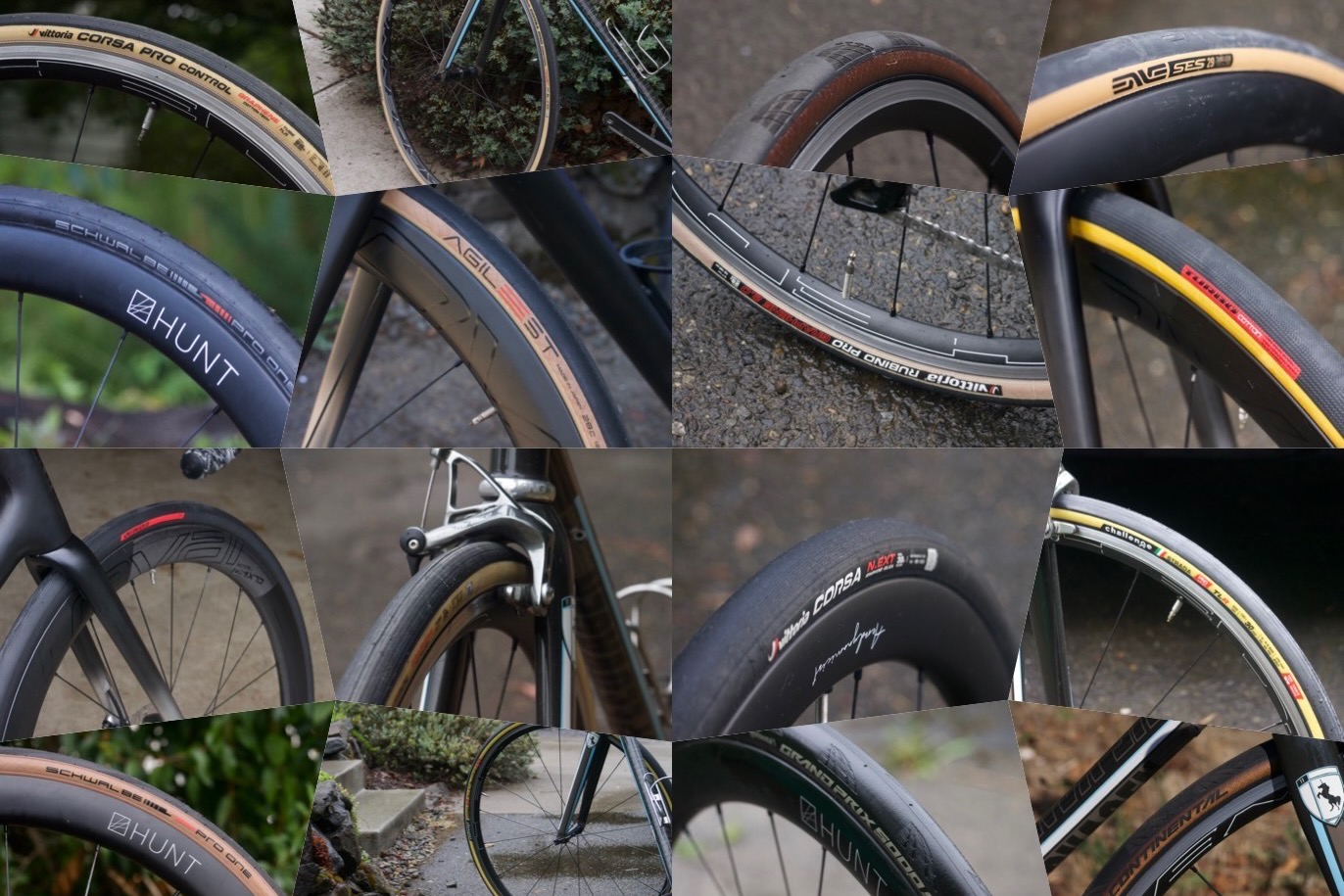As the only point of contact between your bike and the road, road bike tires are a critical component for performance, comfort, and safety while riding. Tires also happen to be one of the most underrated and affordable upgrades that can be made to your bike.
Relative to other components that promise to transform your ride, tires are inexpensive and straightforward to change, yet are an often overlooked aspect of a bike’s performance. The only part of the bike that interacts with the road, the right tires can be the key to fulfilling your bike’s potential, allowing you to find comfort, control, and extra speed in the most challenging conditions you face.
While the marketing machine of the bike industry loves to tout the latest advances in the wind tunnel and convince you that you need one more gear (again), road bike tires have truly undergone a renaissance over the past decade, bringing together a previously elusive balance of attributes in some magnificent offerings. We gathered 19 different models for side-by-side testing and comparison to help you find the right tires for your best rides yet.
Whether you ride tubeless or clinchers, are looking for something for all conditions, the most puncture resistance, or a great value, our top recommendations are listed below followed by other worthy options in our best of the rest section. Read on to find out which tires came out on top and should make your shortlist when it’s time to upgrade. To see all of the tires we tested at a glance, check out our comparison chart. Our buying advice is a good reference if you need help deciding what to buy, and we’ve got answers to common questions in our FAQ section.
Editor’s Note: Our road bike tires review was updated on February 29, 2024, after testing the Cadex Race Tires and adding them to our lineup. We also made some minor edits to the information provided for several products and our buying advice.
The Best Road Bike Tires of 2024
- Best Overall Clincher Road Bike Tires: Continental Grand Prix 5000 Clincher
- Best Budget Clincher Road Bike Tires: Vittoria Rubino G2.0 Clincher
- Runner-Up Best Clincher Road Bike Tires: Specialized Turbo Cotton Hell of the North
- Best Overall Tubeless Road Bike Tires: ENVE SES
- Most Supple Tubeless Road Bike Tires: Challenge Strada Pro Tubeless
- Best Road Bike Tires for Easy Tubeless Setup: Schwalbe Pro One TLE 700 x 30
- Best Road Bike Tires for Puncture Resistance: Continental Gatorskin
Continental Grand Prix 5000 Clincher
Specs
- MSRP $88
- Weight 238g (700 x 28c black/transparent)
- Size Tested 28c
- Available Sizes 23c, 25c, 28c, 32c
- TPI 330
- Tire Type Clincher
- Rim Compatibility Clincher, Hooked Tubeless (with tube)


Pros
- Astonishing grip
- Lively, fun ride quality
- Durable
Cons
- None

Vittoria Rubino Pro G2.0 Clincher
Specs
- MSRP $55
- Weight 275g (700 x 28c)
- Size Tested 28c
- Available Sizes 23c, 25c, 28c, 30c
- TPI 150
- Tire Type Clincher
- Rim Compatibility Clincher, Hooked Tubeless (with tube)

Pros
- Affordable
- Relatively lightweight
- Durable
- Easy to mount
Cons
- Incompatible with hookless rims
Specialized Turbo Cotton Hell of the North Clincher
Specs
- MSRP $80
- Weight 268g (700 x 28c black/transparent)
- Size Tested 28c
- Available Sizes 28c
- TPI 320
- Tire Type Clincher
- Rim Compatibility Clincher, Hooked Tubeless (with tube)

Pros
- Astonishing grip
- Lively, fun ride quality
- Improved puncture protection
Cons
- None
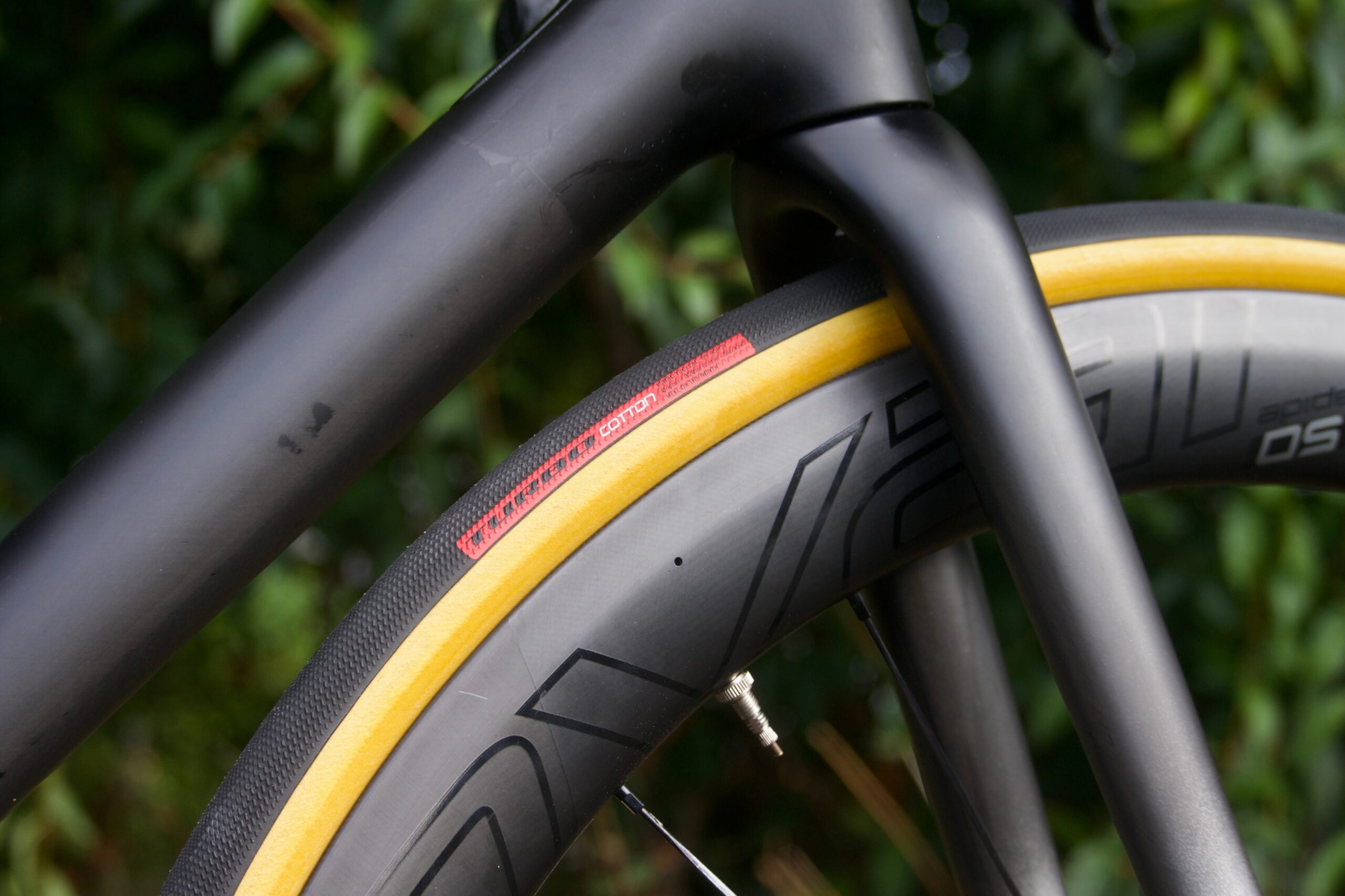
ENVE SES
Specs
- MSRP $75
- Weight 273g (700 x 29c tanwall)
- Size Tested 700 x 29c
- Available Sizes 25c, 27c, 29c, 31c
- TPI 127
- Tire Type Hookless Tubeless
- Rim Compatibility Hookless Tubeless, Hooked Tubeless, Clincher (with tube)

Pros
- Excellent ride quality
- Durable
- Aero gains
Cons
- None

Challenge Strada Pro TLR
Specs
- MSRP $80
- Weight 293g (700 x 30c)
- Size Tested 700 x 30c
- Available Sizes 25c, 27c, 30c
- TPI 300
- Tire Type Tubeless
- Rim Compatibility Hooked Tubeless, Clincher (with tube)
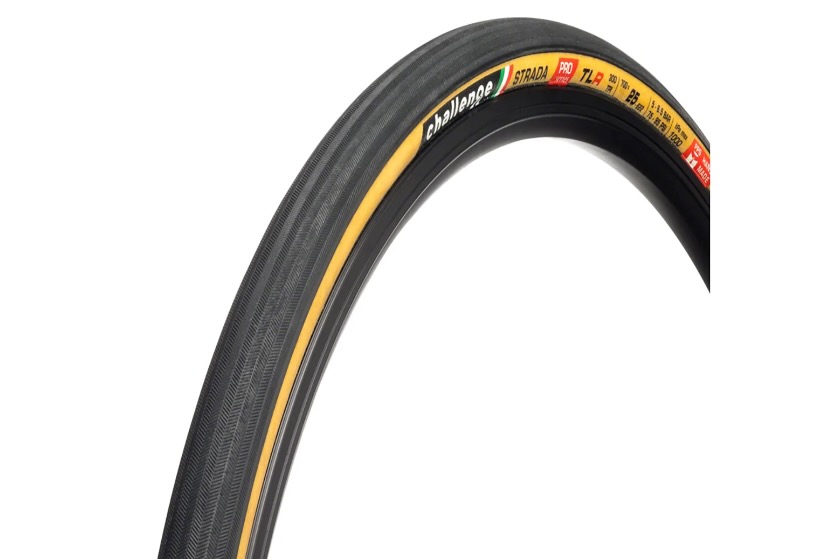
Pros
- Wide, shallow profile
- Supple ride quality
- More affordable than most tubeless tires
Cons
- Challenging to mount (ha!)
- Incompatible with hookless rims
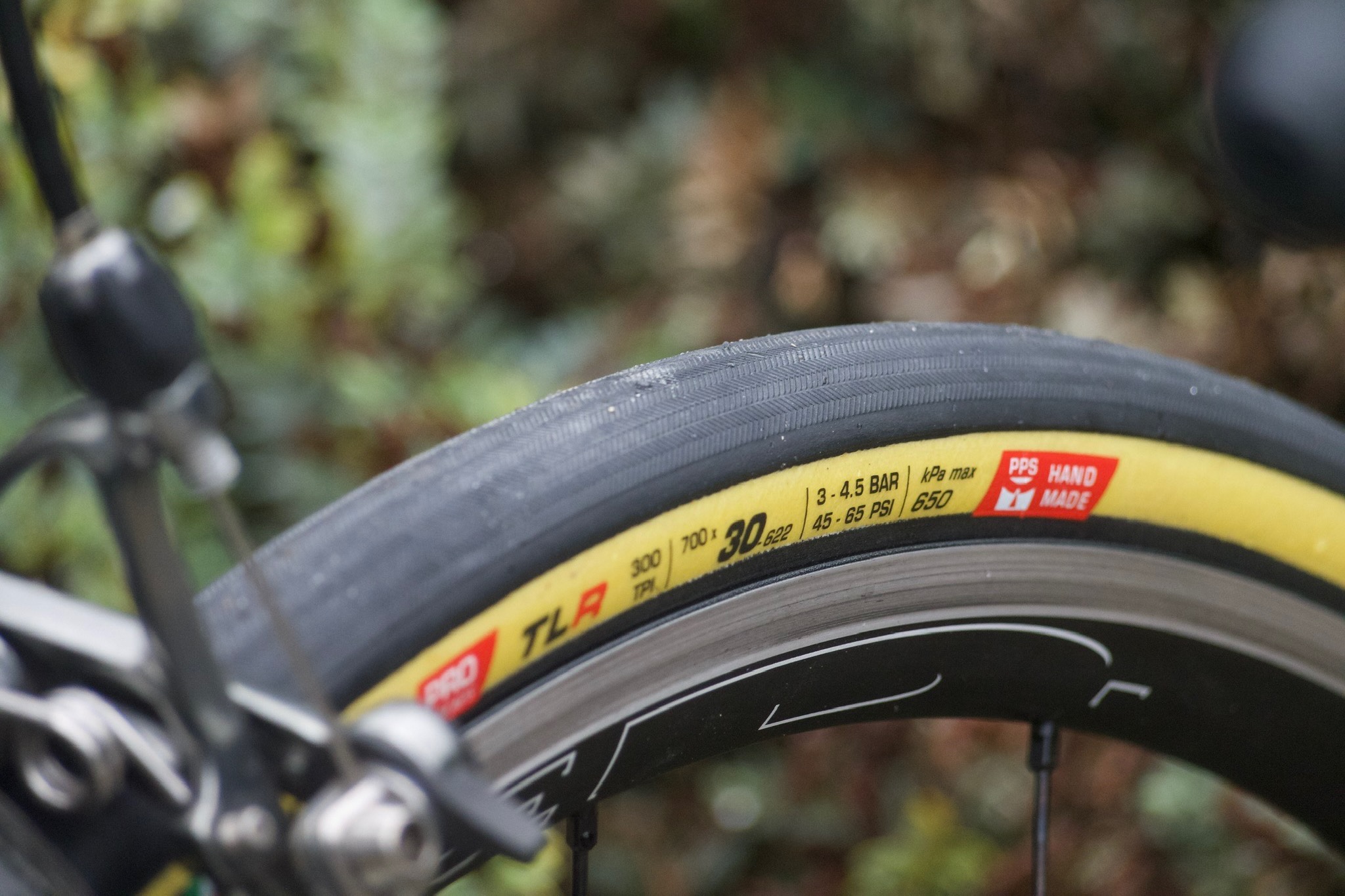
Schwalbe Pro One TLE 700 x 30
Specs
- MSRP $91
- Weight 333g (700 x 30c)
- Size Tested 700 x 30c
- Available Sizes 25c, 28c, 30c
- TPI 127
- Tire Type Hookless Tubeless
- Rim Compatibility Hookless Tubeless, Hooked Tubeless, Clincher (with tube)
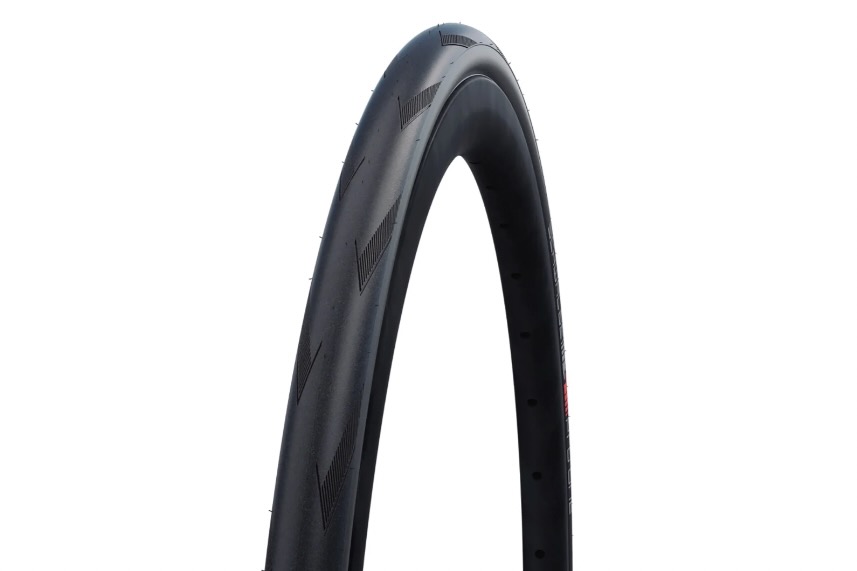
Pros
- Super easy tubeless setup
- Fast rolling and great grip
- Comfortable ride quality
Cons
- Heavier weight
- Expensive
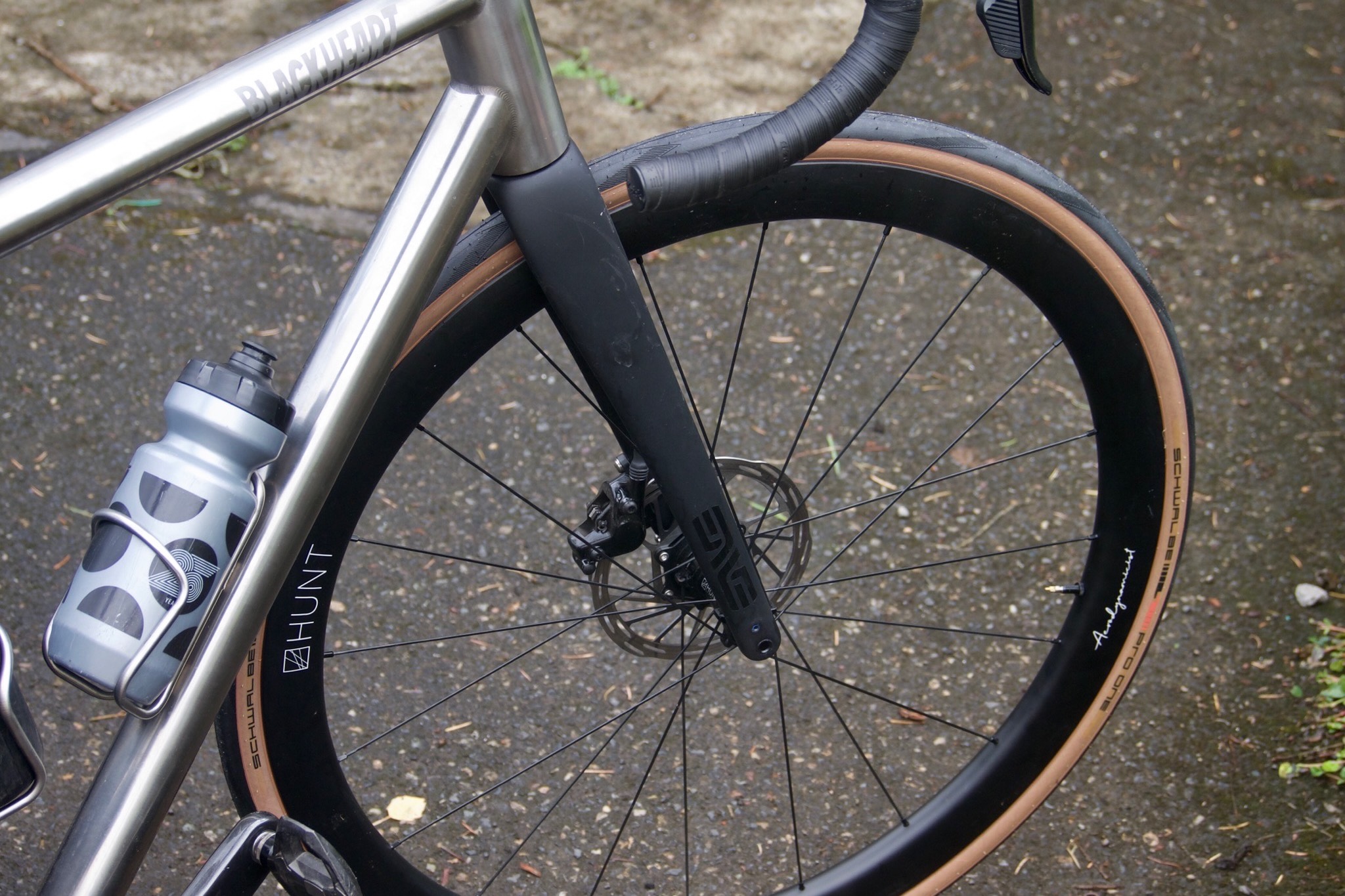
Continental Gatorskin
Specs
- MSRP $68
- Weight 285g (700 x 28c)
- Size Tested 700 x 28c
- Available Sizes 23c, 25c, 28c, 32c
- TPI 60
- Tire Type Clincher
- Rim Compatibility Clincher, Hooked Tubeless (with tube)

Pros
- Reasonable price
- Excellent puncture protection
- Easy installation
Cons
- Stiff ride
- Not particularly grippy

Best of the Rest
Panaracer Agilest TLR
Specs
- MSRP $80
- Weight 250g (700 x 28c Black/Amber)
- Size Tested 700 x 28c
- Available Sizes 25c, 28c, 30c, 32c
- TPI 120
- Tire Type Hookless Tubeless
- Rim Compatibility Hookless Tubeless, Hooked Tubeless, Clincher (with tube)
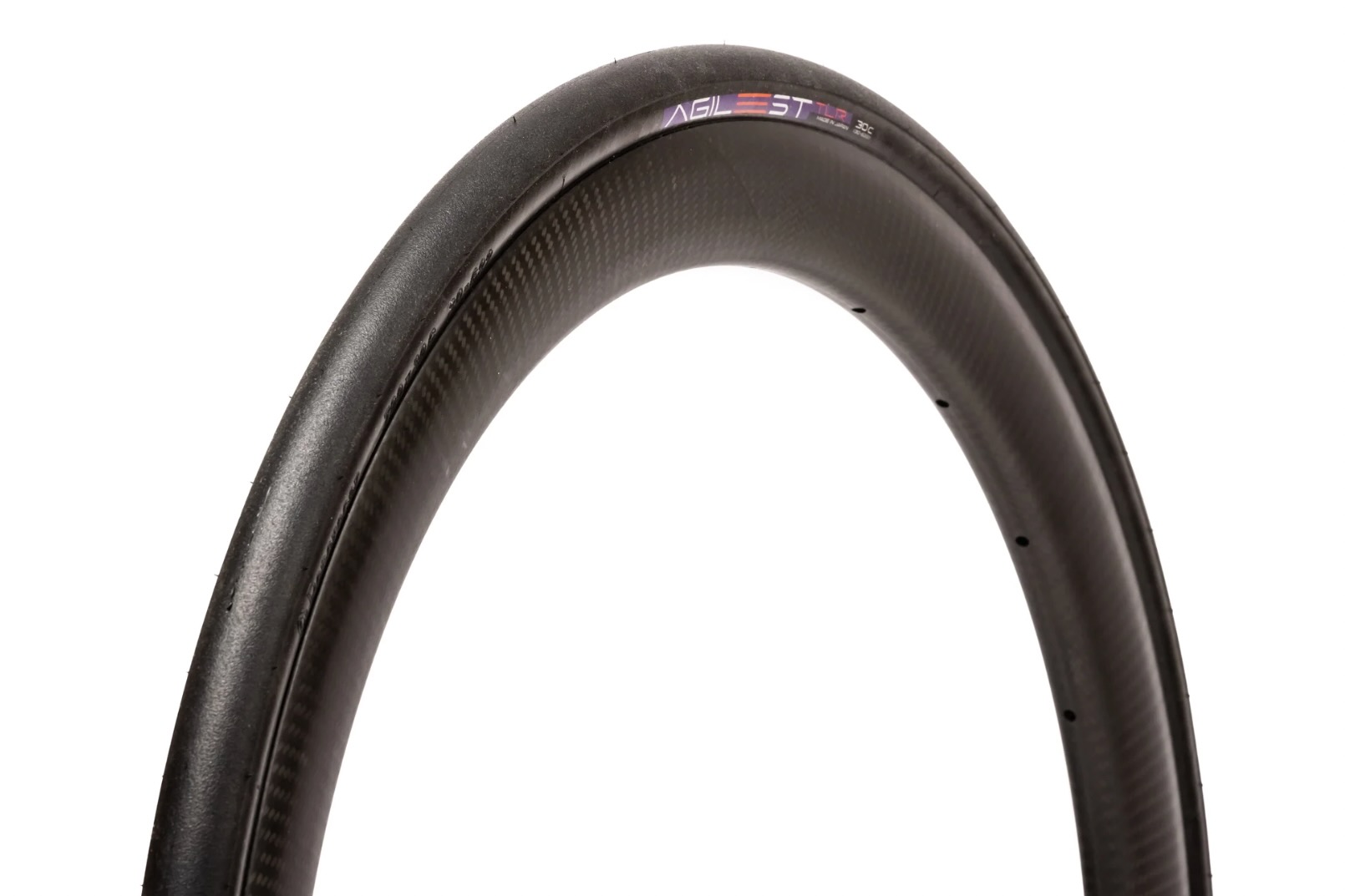
Pros
- Smooth ride
- Light for tubeless
- Easy tubeless setup
Cons
- None
Cadex Race Tire
Specs
- MSRP $105
- Weight 315g (700 x 28c)
- Size tested 28c
- Available Sizes 25c, 28c
- TPI 170
- Tire Type Hookless Tubeless
- Rim Compatibility Clincher (with tube), Hooked Tubeless, Hookless Tubeless
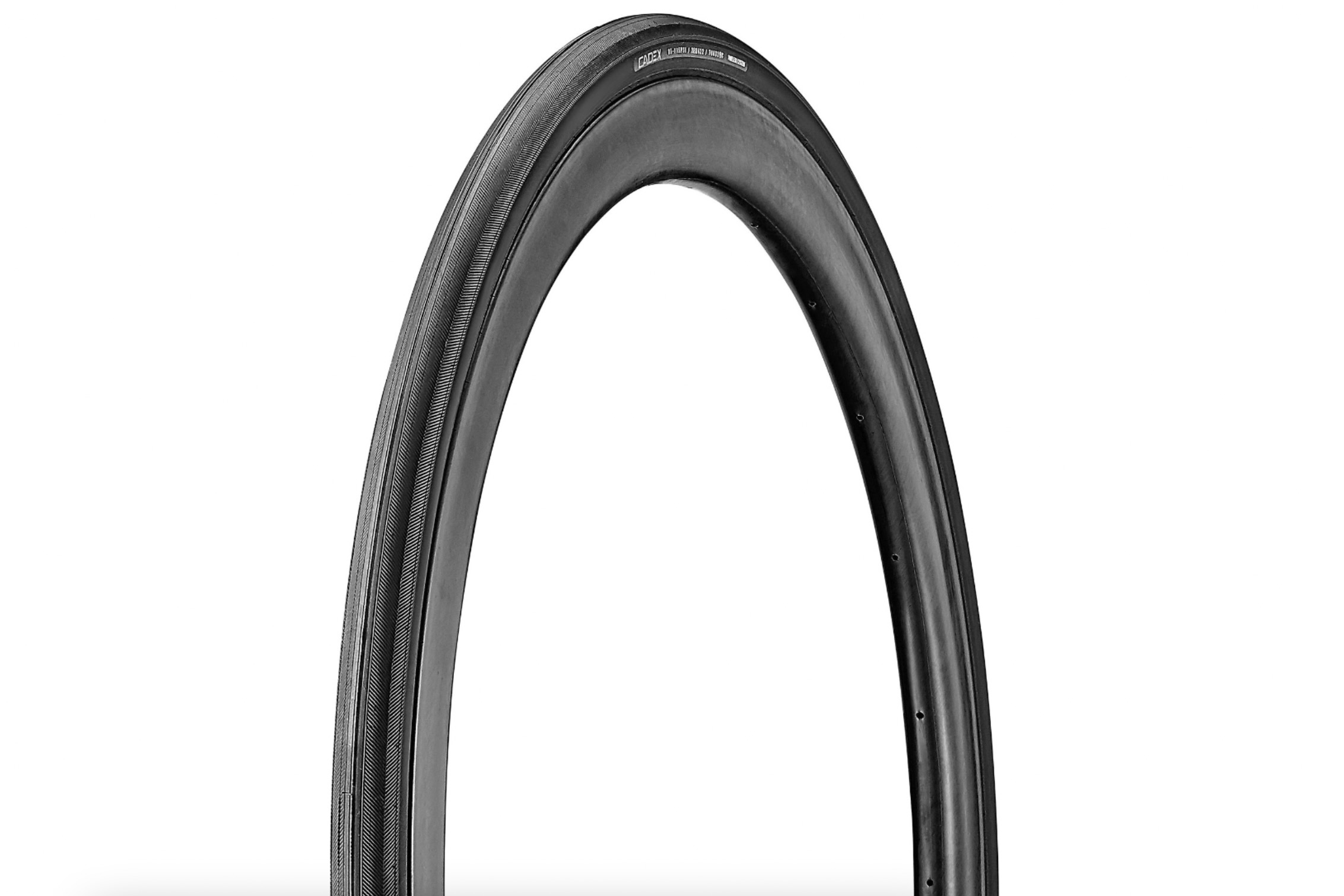
Pros
- Exceptionally low rolling resistance
- Maximum grip
- Stout puncture protection
Cons
- Heavier weight
- Triple digit retail cost per tire
Specialized Turbo Pro T5
Specs
- MSRP $55 US
- Weight 291g (700 x 30c)
- Size tested 700 x 30c
- Available Sizes 24c, 26c, 28c, 30c
- TPI 60
- Tire Type Clincher
- Rim Compatibility Clincher, Hooked Tubeless (with tube)
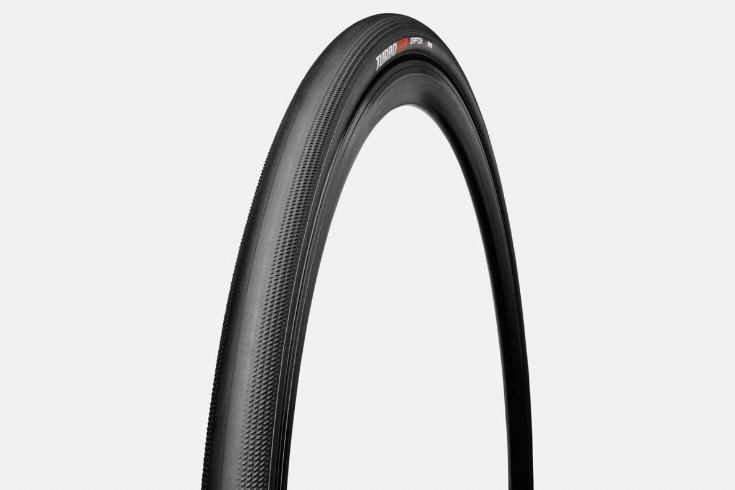
Pros
- Durable
- Affordable
- Smooth rolling
- Confident handling
Cons
- Heavy-ish
Vittoria Corsa N.EXT Clincher
Specs
- MSRP $75
- Weight 293g (700 x 32c)
- Size Tested 700 x 32c
- Available Sizes 24c, 28c, 30c, 32c, 34c
- TPI 300
- Tire Type Clincher
- Rim Compatibility Clincher, Hooked Tubeless (with tube)
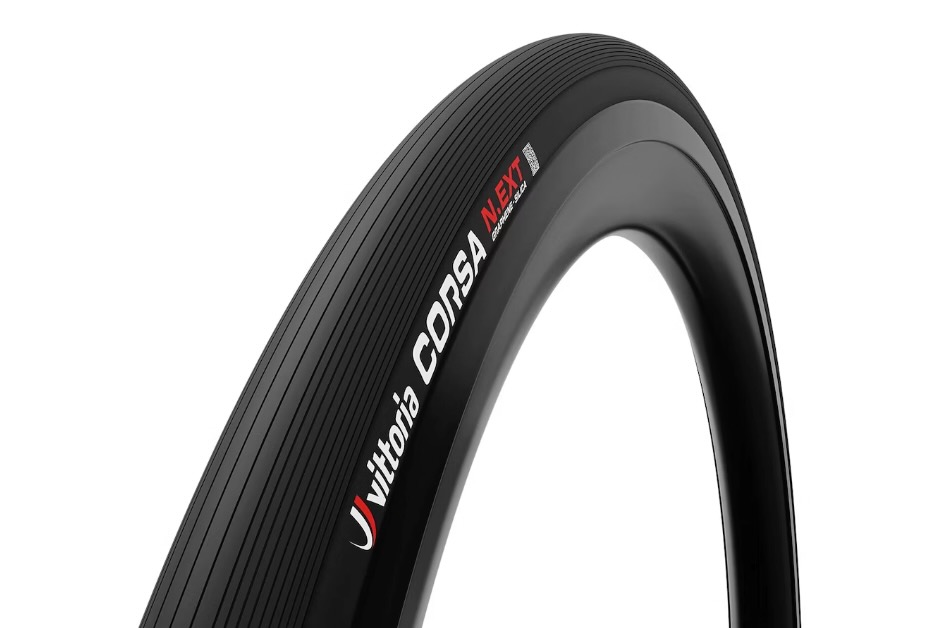
Pros
- Reasonable weight for size
- Low rolling resistance
- Supple ride quality
Cons
- Easy to puncture
- 32c measured smaller than advertised
Continental Grand Prix 5000 S TR
Specs
- MSRP $104
- Weight 287g (700 x 28c black)
- Size tested 700 x 28c
- Available Sizes 25c, 28c, 30c, 32c
- TPI 220
- Tire Type Hookless Tubeless
- Rim Compatibility Hookless Tubeless, Hooked Tubeless, Clincher (with tube)
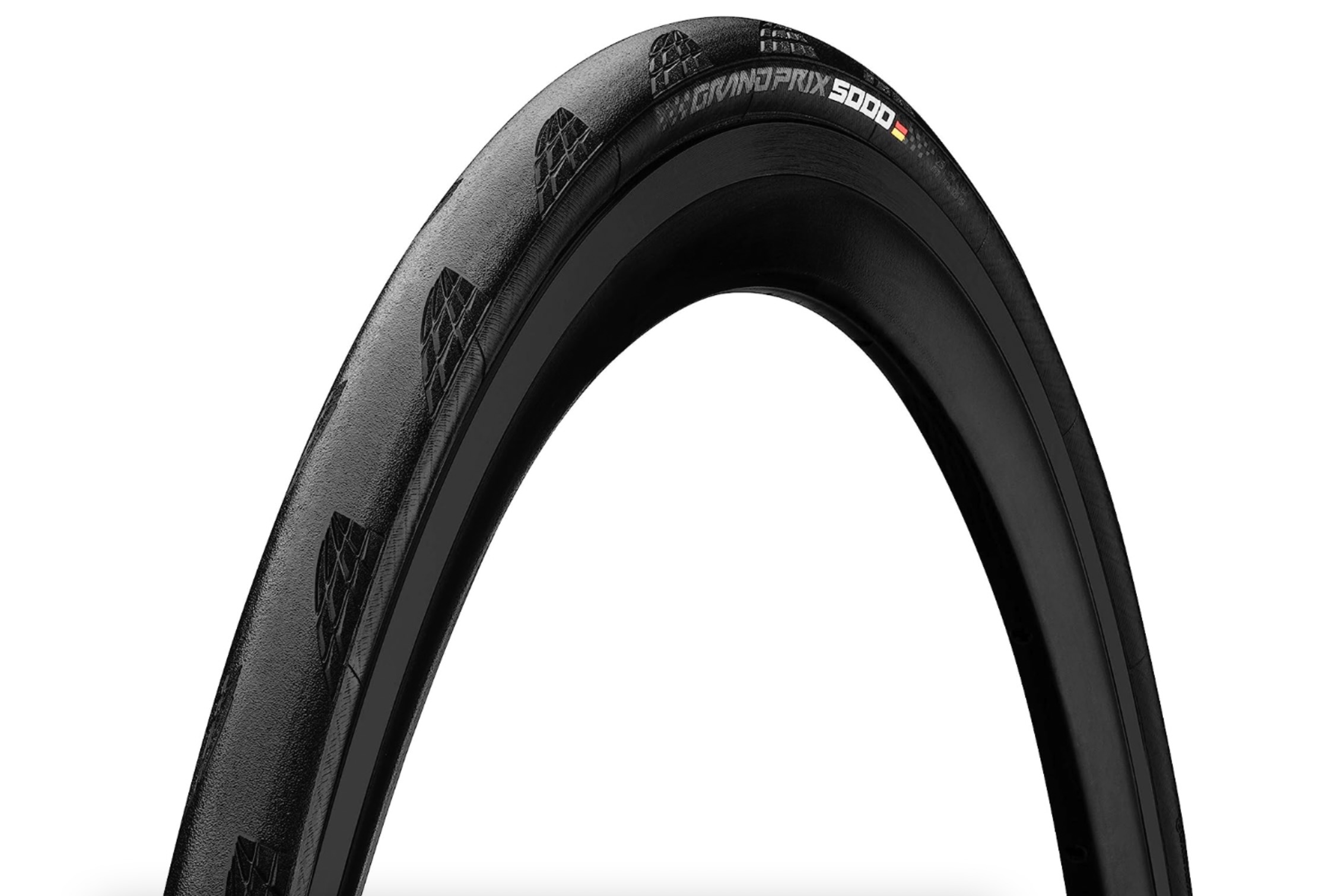
Pros
- Good grip
- Holds speed very well
- 50g lighter than before
- Resists punctures
Cons
- Expensive
- Bland ride quality
- Mid-range TPI for the cost
Pirelli P ZERO Race TLR 4S
Specs
- MSRP $100 US
- Weight 380g (700 x 30c)
- Size tested 700 x 30c
- Available Sizes 28c, 30c, 32c
- TPI 120
- Tire Type Hookless Tubeless
- Rim Compatibility Hookless Tubeless, Hooked Tubeless, Clincher (with tube)
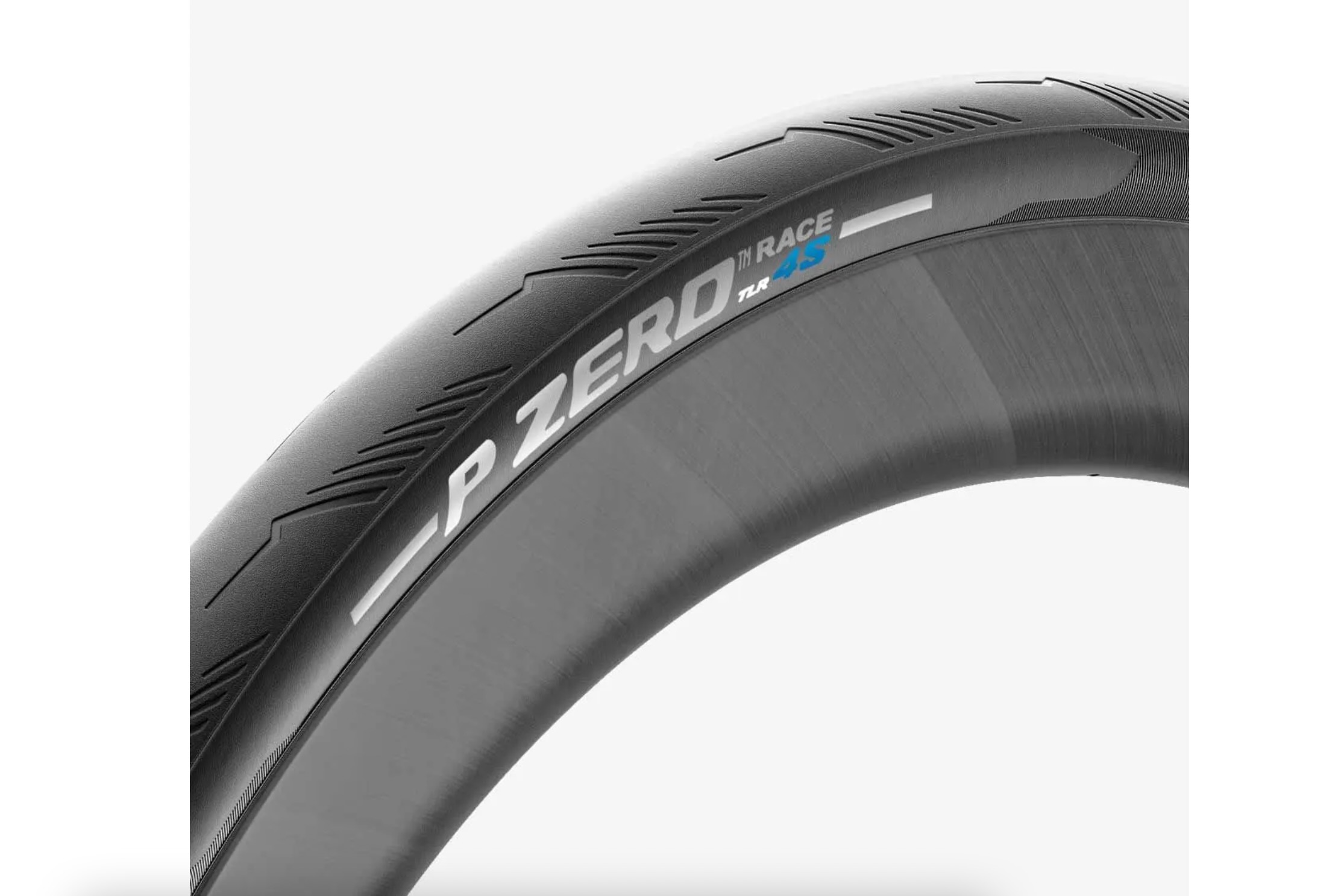
Pros
- Wide, shallow profile
- Supple ride quality for tough casing
- Good for riding in all seasons
Cons
- Heavy
- Expensive
Panaracer Agilest Clincher
Specs
- MSRP $57
- Weight 210g (700 x 28c Black/Tan)
- Size Tested 28c
- Available Sizes 23c, 25c, 28c, 30c
- TPI 120
- Tire Type Clincher
- Rim Compatibility Clincher, Hooked Tubeless (with tube)

Pros
- Super light
- Excellent response and grip
- Affordable
Cons
- None
Vittoria Corsa Pro Control TLR
Specs
- MSRP $100
- Weight 324g (700 x 28c Black/Tan)
- Sizes Tested 700 x 28c
- Available Sizes 26c, 28c, 30c, 32c, 34c
- TPI 320
- Tire Type Hookless Tubeless
- Rim Compatibility Hookless Tubeless, Hooked Tubeless, Clincher (with tube)
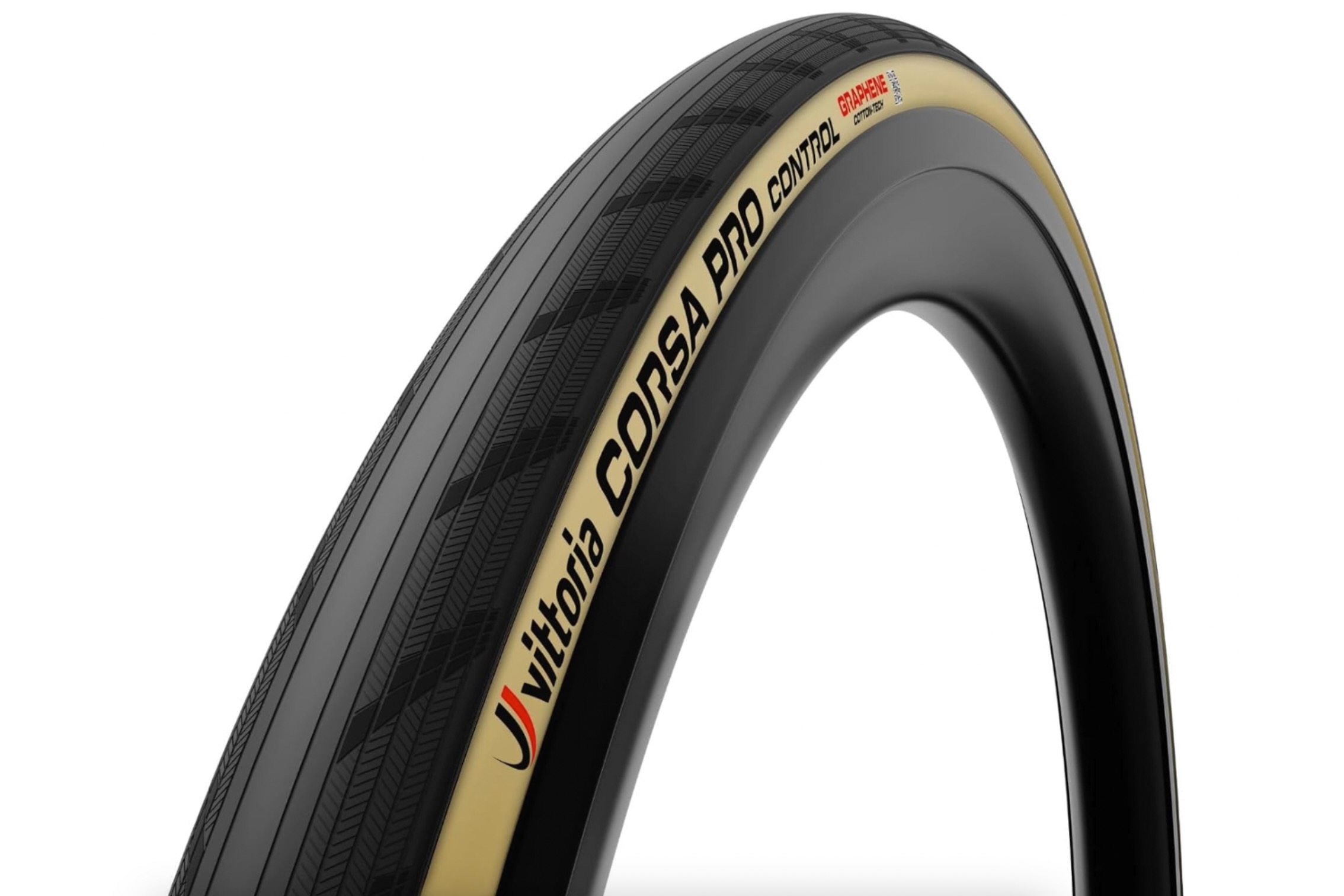
Pros
- Smooth ride
- Easy tubeless setup
Cons
- Heavier weight
- Expensive
Pirelli Cinturato Road
Specs
- MSRP $64.90
- Weight 344g (700 x 28c)
- Size tested 700 x 28c
- Available Sizes 26c, 28c, 32c, 35c
- TPI 60
- Tire Type Clincher
- Rim Compatibility Clincher, Hooked Tubeless (with tube)
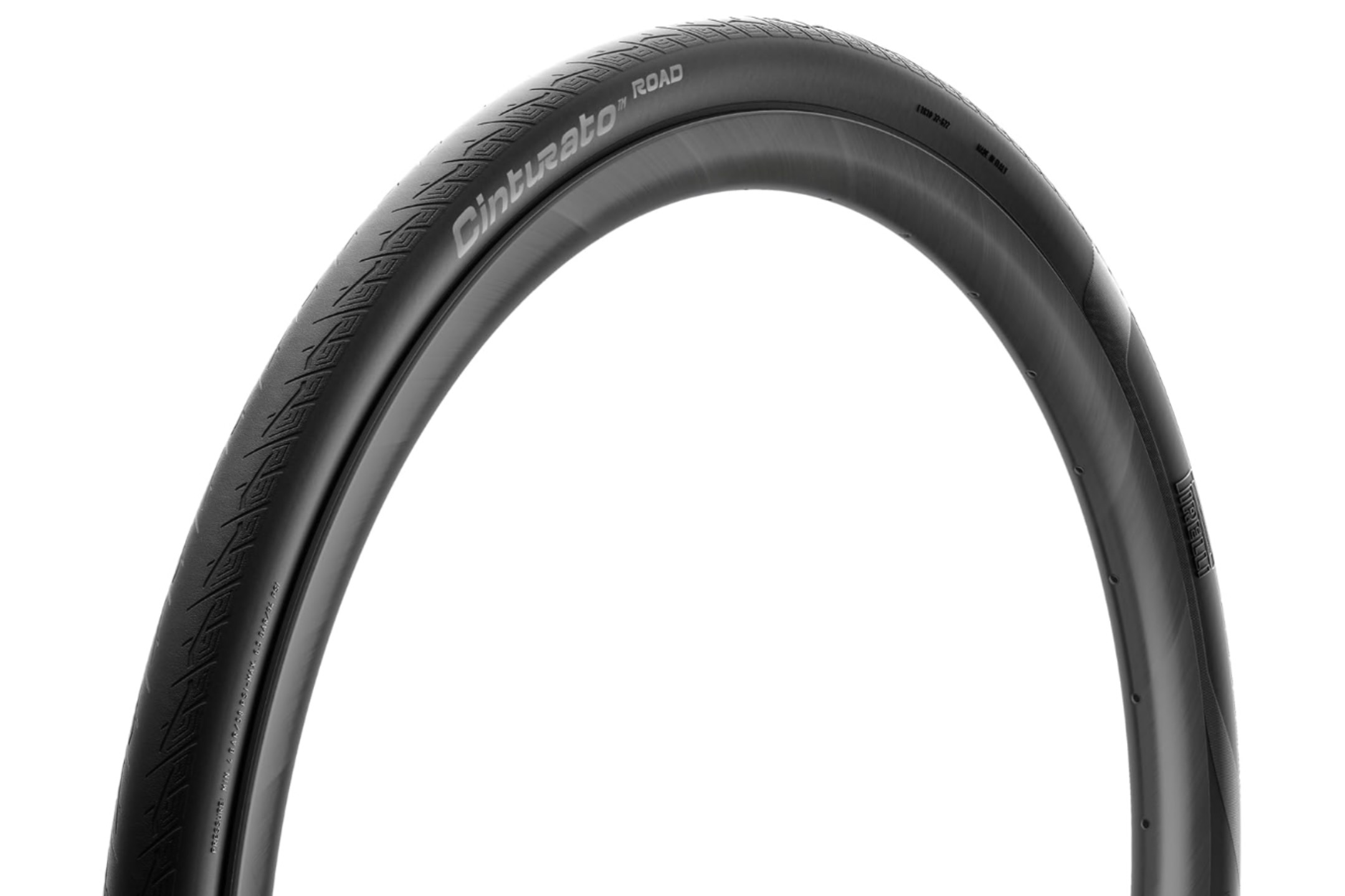
Pros
- Excellent puncture protection
- Durable
- Good all-season tire
Cons
- Stiff ride
- Heavy
Schwalbe Pro One TLE 700 x 32
Specs
- MSRP $100
- Weight 361g (700 x 32c Black/Tan)
- Size tested 700 x 32c
- Available Sizes 32c
- TPI 320
- Tire Type Hookless Tubeless
- Rim Compatibility Hookless Tubeless, Hooked Tubeless, Clincher (with tube)
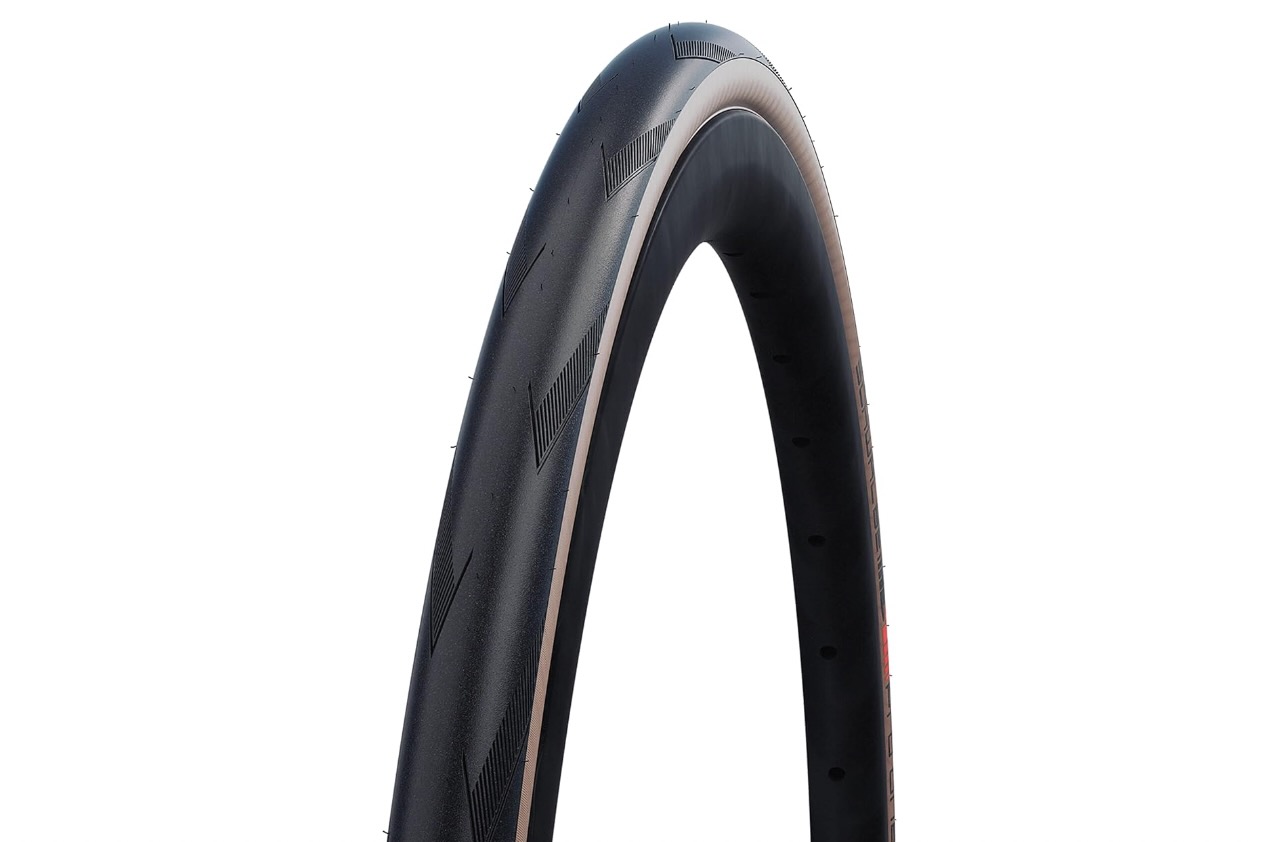
Pros
- Plush ride
- Easy tubeless setup
- More capable on gravel than most road tires
Cons
- Heavy
- Expensive
Vittoria Corsa Control G2.0 Clincher
Specs
- MSRP $80
- Weight 293g (700 x 28c)
- Size Tested 700 x 28c
- Available Sizes 25c, 28c, 30c
- TPI 320
- Tire Type Clincher
- Rim Compatibility Clincher, Hooked Tubeless (with tube)
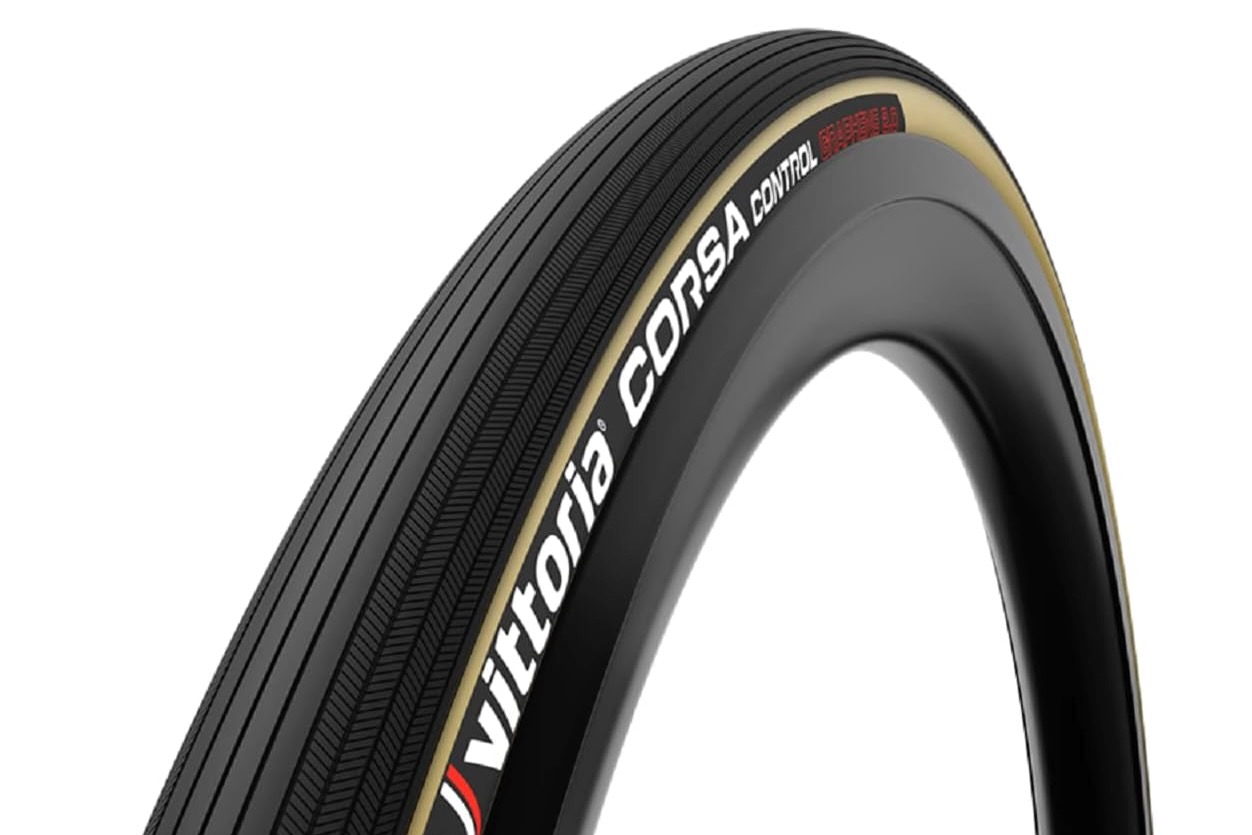
Pros
- Divine ride quality
- Excellent puncture protection
Cons
- Tread will eventually delaminate from casing
Pirelli P7 Sport
Specs
- MSRP $40
- Weight 278g (700 x 28c)
- Size tested 700 x 28c
- Available Sizes 24c, 26c, 28c, 32c
- TPI 60
- Tire Type Clincher
- Rim Compatibility Clincher, Hooked Tubeless (with tube)
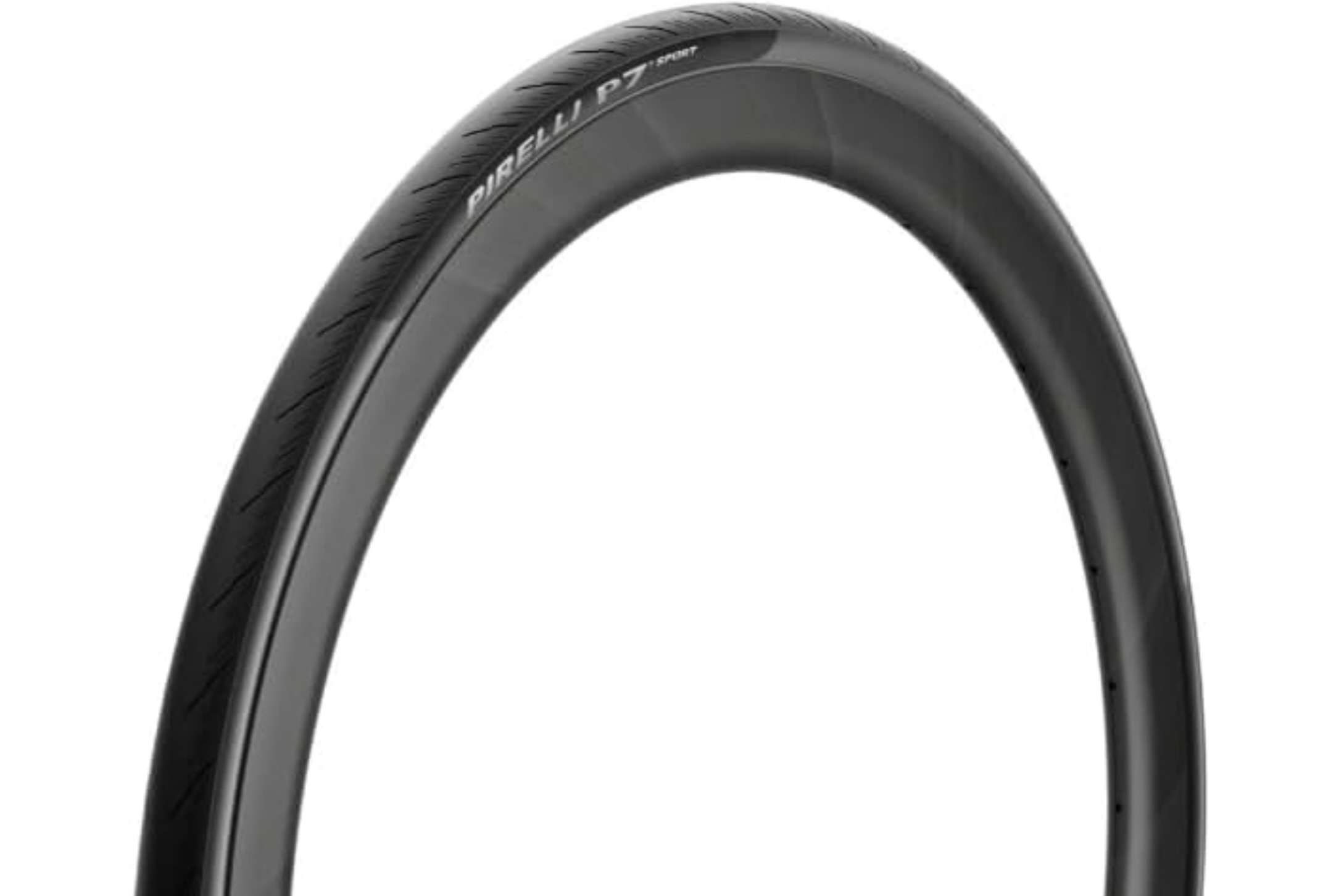
Pros
- Durable
- Affordable
Cons
- Moderately heavy
- High rolling resistance
Road Bike Tires Comparison Chart
| Tire Model | MSRP | Weight (size tested) | Available Sizes | Tire Type | TPI |
|---|---|---|---|---|---|
| Continental Grand Prix 5000 Clincher | $88 | 238g (700 x 28c) | 23, 25, 28, 32c | Clincher | 330 |
| Vittoria Rubino Pro G2.0 Clincher | $55 | 275g (700 x 28c) | 23, 25, 28, 30c | Clincher | 150 |
| Specialized Turbo Cotton Hell of the North | $80 | 268g (700 x 28c) | 28c | Clincher | 320 |
| ENVE SES | $75 | 273g (700 x 29c) | 25, 27, 29, 31c | Hookless Tubeless | 127 |
| Challenge Strada Pro Tubeless | $80 | 293g (700 x 30c) | 25, 27, 30c | Tubeless | 300 |
| Schwalbe Pro One TLE 700 x 30 | $91 | 333g (700 x 30c) | 25, 28, 30c | Hookless Tubeless | 127 |
| Continental Gatorskin | $68 | 290g (700 x 28c) | 23, 25, 28, 32c | Clincher | 60 |
| Panaracer Agilest TLR | $80 | 250g (700 x 28c) | 25, 28, 30, 32c | Hookless Tubeless | 120 |
| Cadex Race Tire | $105 | 315g (700 x 28c) | 25, 28c | Hookless Tubeless | 170 |
| Specialized Turbo Pro T5 | $55 | 291g (700 x 30c) | 24, 26, 28, 30c | Clincher | 60 |
| Vittoria Corsa N.EXT Clincher | $75 | 293g (700 x 32c) | 24, 28, 30, 32, 34c | Clincher | 300 |
| Continental Grand Prix 5000 S TR | $104 | 287g (700 x 28c) | 25, 28, 30, 32c | Hookless Tubeless | 220 |
| Pirelli P Zero Race TLR 4S | $100 | 380g (700 x 30c) | 28, 30, 32c | Hookless Tubeless | 120 |
| Panaracer Agilest Clincher | $57 | 210g (700 x 28c) | 23, 25, 28, 30c | Clincher | 120 |
| Vittoria Corsa Pro Control TLR | $100 | 324g (700 x 28c) | 26, 28, 30, 32, 34c | Hookless Tubeless | 320 |
| Pirelli Cinturato Road | $64.90 | 344g (700 x 28c) | 26, 28, 32, 35c | Clincher | 60 |
| Schwalbe Pro One TLE 700 x 32 | $100 | 361g (700 x 32c) | 32c | Tubeless | 320 |
| Vittoria Corsa Control G2.0 Clincher | $80 | 293g (700 x 28c) | 25, 28, 30c | Clincher | 320 |
| Pirelli P7 Sport | $40 | 278g (700 x 28c) | 24, 26, 28, 32c | Clincher | 60 |

Why Should You Trust Bikerumor?
For well over a decade, the team at Bikerumor has been reporting on the latest products, technologies, and news across all disciplines of cycling. Sure, writing about bikes is our job, but riding them is a passion that all of our staff share. Whether testing a new bike, lining up for a weekend race, or simply riding for the fun of it, we know that having the right gear for the job can improve our experience and performance. And, while they are often overlooked, tires are our connection to the road and a critical component when it comes to comfort, control, and safety while road biking.
Our road bike tires buyer’s guide tester and review author, Bennett Shane, has been cycling for over two decades and knows a thing or two about tires. Bennett spent many years between the tape in his racing days, training hard and constantly searching for marginal performance gains. Though his racing days are behind him, he spends an inordinate amount of time on the bike for fun and fitness, stacking vertical and ticking off the miles on mountain roads throughout the Pacific Northwest near his home in Portland, OR. As a gear-obsessed cyclist, Bennett stays up to date on all types of road cycling products, including tires, in his ongoing effort to find the best gear to improve his performance on the road. He also spent many years working for numerous prominent brands in the cycling industry, and he has a unique perspective on products from both sides of the table. The combination of his cycling and industry experience makes Bennett particularly adept at analyzing the design, materials, construction, and most importantly, the performance of the products he tests. In addition to road bike tires, Bennett has contributed his experience and expertise to several other buyer’s guides including protective road bike helmets, the best road bike shoes, and the most comfortable road bike saddles.
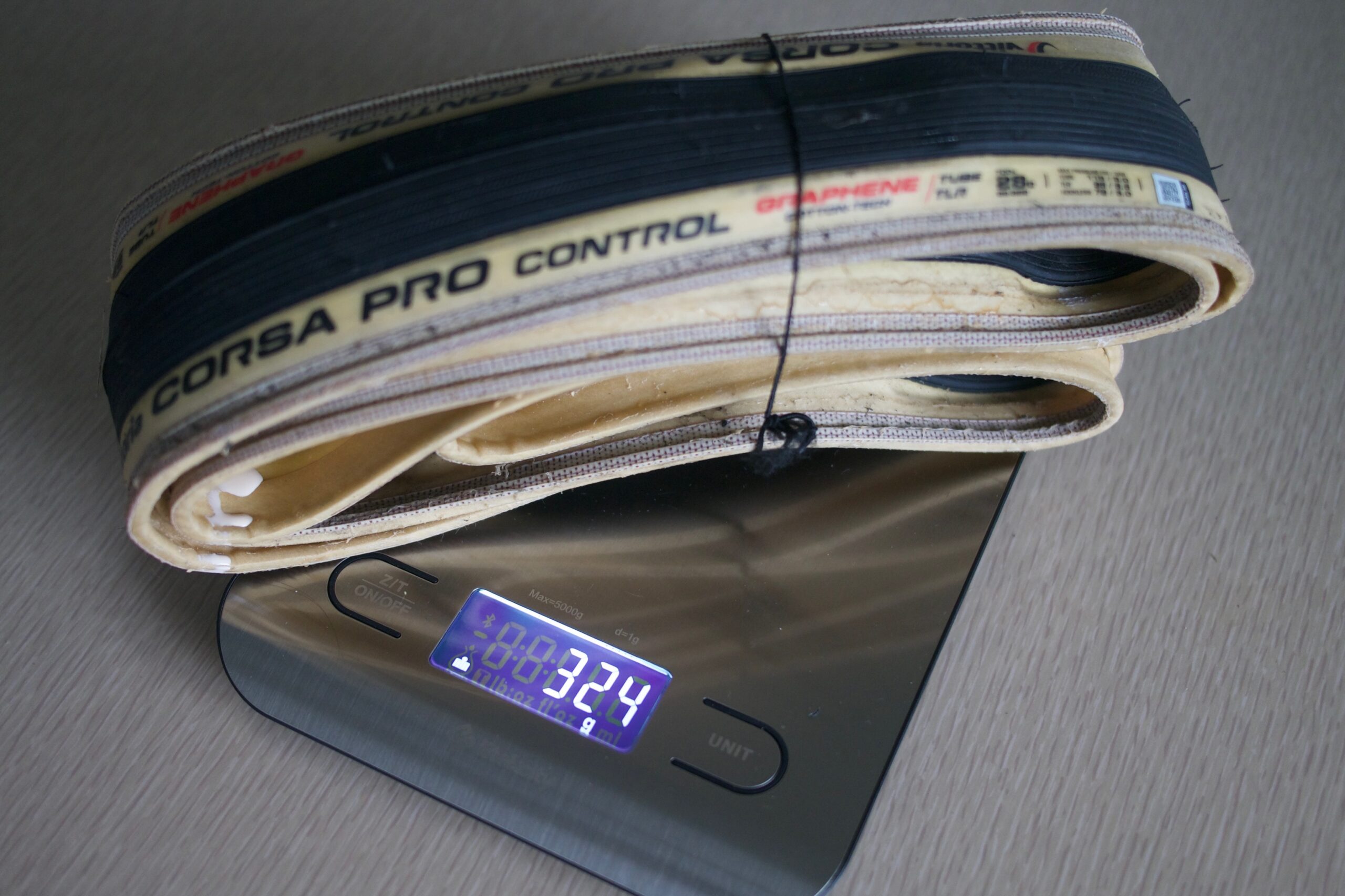
How We Tested
For our road bike tires buyer’s guide, we researched the best and most highly regarded models on the market before rounding up 19 to test and compare side by side. After weighing each model for comparison to manufacturers’ specs, they were mounted on compatible rims of Bennett’s small fleet of boutique road bikes to determine ease of installation and measured with digital calipers to check their inflated size. Over the course of several weeks, each model was taken out for multiple road rides on surfaces varying from super smooth and freshly paved to rough and littered with debris. Hills were climbed and descents were bombed while paying close attention to and keeping detailed notes on each model’s rolling and handling characteristics, puncture resistance, suppleness (or lack thereof), and weight and its effect on acceleration and climbing efficiency. When testing wrapped up, we zeroed in on our favorites and those that excel for specific reasons compared to the rest.

Buying Advice: How to Choose Road Bike Tires
There are a number of factors to consider when choosing new road bike tires. One of the most important factors is the type of rims you have, which will largely dictate what type of tires you can use. After that, factors like tire size, weight, TPI (threads per inch), tread design, puncture resistance, durability, and price are all things that may influence a purchase decision. Here we’ll break down the most important considerations when searching for your next pair of road bike tires.
Types of Road Bike Tires
There are three types of tires used in road cycling: clincher, tubeless, and tubular. While they all look quite similar when mounted on a wheel, they differ in how they hold air and the rims they will be compatible with. Their different constructions and designs may also affect their ride quality.
Clincher
Standard, or tube-type, clincher tires have been around for years and are still the most common out on the road. These tires require an inner tube to hold air pressure and will mount to any rims (clincher or tubeless-ready) that have a “hooked” bead wall. The benefits of clincher tires are that they are generally less expensive and lighter weight than tubeless options, along with being easy to deal with when installing or fixing a flat.
Tubeless
Despite widespread acceptance among mountain and gravel riders, tubeless road tires have been a bit slower to catch on. Times are changing, however, and tubeless tires are gaining more traction (pun intended) among road cyclists. Though they look nearly identical to a standard, tube-type clincher, slight variations to their construction and design make them capable of holding air without a tube when used with a compatible tubeless-ready rim. They are designed to have a tight and precise enough seal between the tire bead and the rim’s bead wall that they hold air without one. In addition to the tire and rim interface, a liquid tubeless tire sealant is added to help seal up any leaks and hopefully plug up any small punctures or cuts that may occur while riding. In general, tubeless tires are claimed to be more supple and forgiving because they can be run at lower pressures while also being more resistant to flats and punctures than an inner tube.
Tubeless tires require tubeless-ready rims with tubeless valve stems and an airtight seal of the rim bed using tubeless rim tape. There are now two styles of tubeless-ready rims on the market, more traditional rims with “hooked” bead walls, and the newer “hookless” rims. It is important to know which type of tubeless rim you have, as not all tubeless tires will be compatible with both types. Virtually all tubeless tires will work with the hooked tubeless-ready rims, but only those that specify they are for use with hookless rims should be used with hookless rims.
Tubular
Tubular tires have long been popular with professional cyclists and racers. Tubular, or sew-up, tires essentially combine the tire and the tube (sewn together) into a single unit which then gets glued onto a tubular-specific rim. They are claimed to provide a supple ride quality and weight savings depending on the rim and tire combination. Due to the fact that the tires are glued to the rims, they are not very practical for everyday use or riders who are not part of a pro team. Not only are they more expensive than clincher or tubeless tires, but roadside fixes are not possible and swapping tires is an arduous and time-consuming process.

Rim Compatibility
A major factor in determining which type of tire you need is the compatibility with your rims. Not all tire and rim combinations will work together, so it’s important to identify what type of rims you have to determine which tires will work for you.
Clincher
Standard clincher tires must be used with a tube and they will work on “hooked” rims whether they are clincher-only or tubeless-ready. We’ll say it again, if you are using a tube-type clincher tire on a hooked tubeless-ready rim, you still need to use an innertube.
Tubeless
All tubeless tires will work with “hooked” tubeless-ready rims. This includes tires that are designed to work with “hookless” tubeless rims. Tubeless tires can also be used on clincher rims that are not tubeless-ready with an innertube. You can learn more about some of the best tubeless road wheels chosen by the Bikerumor staff.
Hookless Tubeless
The only tires that can be used on hookless rims are those that are specifically designated as “hookless tubeless”. Though they don’t look much different than other tubeless tires, they have to meet a different ETRTO standard for compatibility with hookless rims. Hookless tubeless tires can also be used on hooked tubeless rims and clincher rims (with a tube). You can find out more about hookless tubeless in this article.
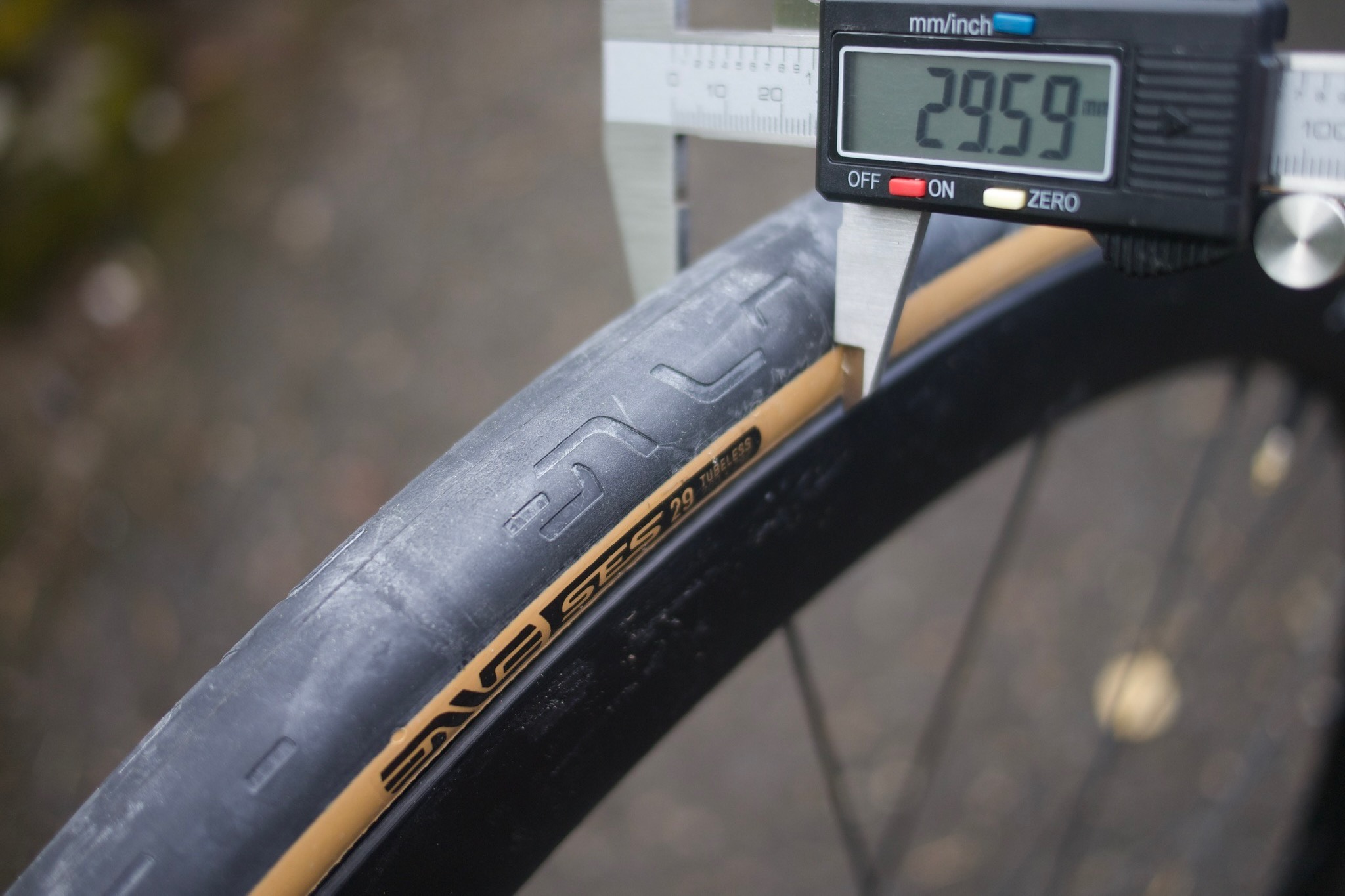
Tubeless vs. Clincher
With tubeless tires gaining popularity among road cyclists, there is undoubtedly some debate happening over which is the best. Tubeless road tires have been in a state of flux since first coming to the road bike market nearly two decades ago in 2006. Safe to say, the technology hasn’t been widely accepted until recently, when many professional teams began to make the switch from tubular or “sew-up” tires, to tubeless. It’s important to note that this transition by pro teams wasn’t as much made by choice, as by necessity, since most major wheel companies that sponsor pro teams simply stopped making tubular rims, which was the traditional choice since the dawn of the sport. This forced most teams to adopt tubeless rims and compatible tires to go along with them.
Simultaneous to professional teams ditching their tubular tires, riders experienced mixed results and mixed messaging from brands over exactly what the benefit of road tubeless tires was. First, Hutchinson and Shimano offered tires and rims, respectively, and marketed this as a solution to punctures. Since the interior of the tire would be coated with a latex-based sealant that would rush to the site of the hole in the tire and congeal into a barrier, preventing a significant volume of air from escaping, riders could continue pedaling along in bliss, instead of pulling over to address the puncture. In practice, this worked most of the time, but due to the high pressures that many riders use inside their tires, the sealant often had a hard time plugging larger tears in the tire casing, while it sprayed out all over the bike frame and nearby riders. This was followed by a bit of a lull in tubeless road tire development for quite a few years. More recently, road tubeless was rebooted, backed by testing that indicated tubeless setups were faster than running a clincher tire, even in combination with a low-friction latex innertube. This idea was debated within the industry without resolution until rim manufacturers tipped the balance by developing “hookless” tubeless rims that simply won’t work with clincher tires. Previous to “hookless”, all “tubeless-ready” (hooked) rims would accept a tubeless or clincher tire.
Alas, despite the semi-coalescence around hookless rim designs, the fitment of tubeless tires to tubeless rims still isn’t automatic. As of publication, there is no standard fitment of road tubeless tires and rims. Although this negotiation between rim and tire manufacturers continues, many combinations of rims and tires simply don’t mate well, leading to installation headaches and potential safety concerns out on the road.
Atop these issues is perhaps the most pressing question – do tubeless tires actually outperform clinchers to any appreciable degree? While it is true that foregoing the rubber innertube decreases mass and friction, the added weight of sealant and tubeless valves, plus the extra heft of road tubeless tires (upwards of 140g/ tire in some cases) surely offset, if not fully cancel out, those gains. That said, a combination of tubeless tire and rim that is easy to install, and creates a tire profile appropriate for running lower pressure of 60-70 psi, for example, will provide a plush, confident, and fast ride. Provided that the sealant is kept fresh, it will seal most minor punctures as you ride, or at least allow you to simply add back the lost air once the seal has been achieved.
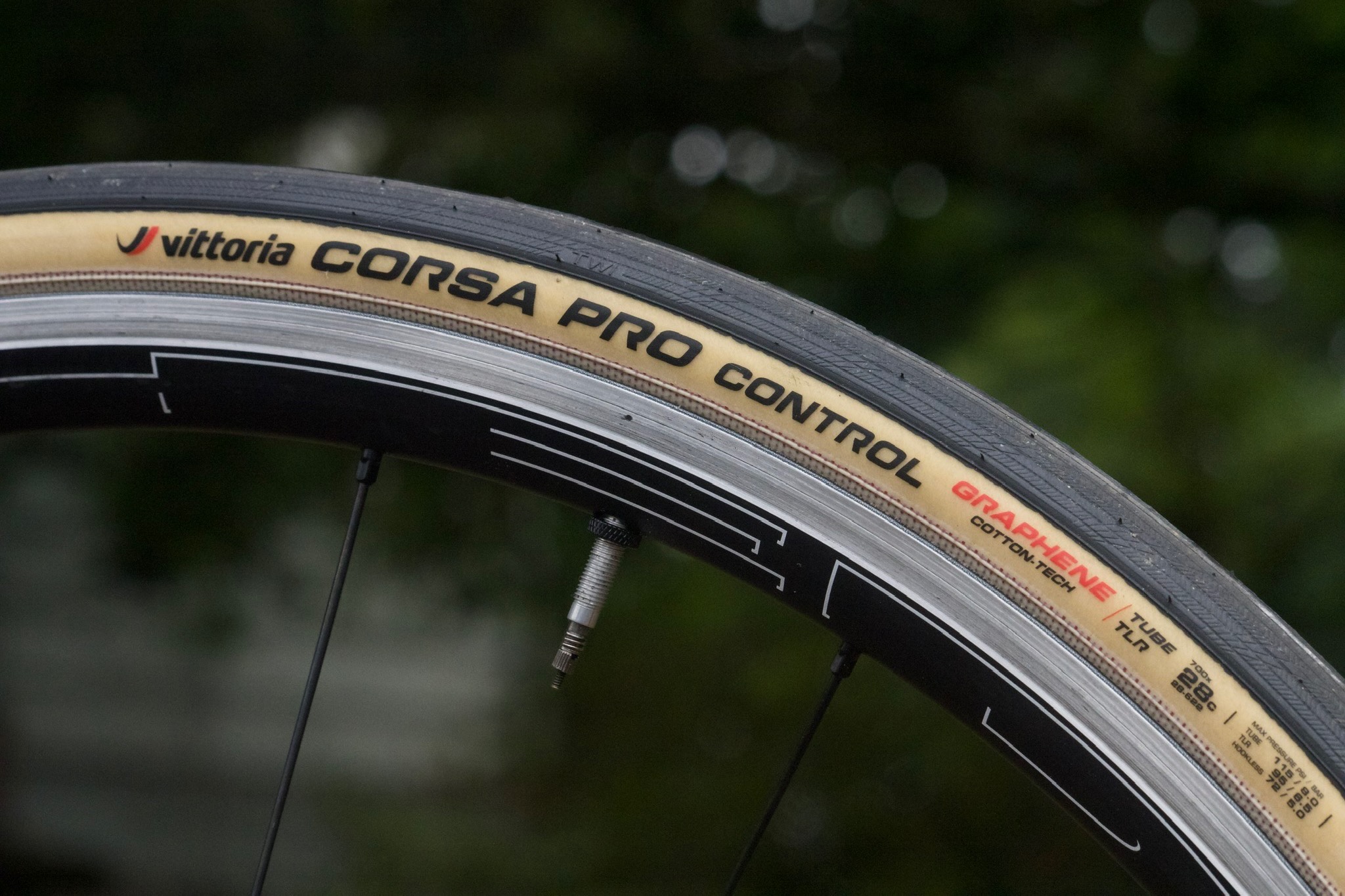
Tire Size
In recent years, road bike tires have increased in volume substantially, with 28 or even 30c tires being the norm. While 23c and 25c tires are certainly lighter and in some cases more aerodynamically efficient, most racers and nearly all recreational and endurance road riders prefer the larger volume 28c and 30c tires because of their comfort and confident maneuvering. This is made possible because, with a larger volume of air, the air pressure can be kept lower, allowing the tire to better conform to road chatter and lateral forces of turning the bike. That said, not everyone loves to run pressure super low as higher pressures can provide sharper handling or may simply feel better for a given tire or bike.
It is worth mentioning that the tire clearance of your frame is a consideration when deciding what size tires you need. Nearly every disc brake road bike will clear at least a 28c, but to be safe, visually confirm 3mm of clearance all around the tire in both the front fork as well as near the chainstays, downtube, and bottom bracket. The width of your rims is also important, as super narrow rims may not pair well with some of today’s wider road bike tires, and vice versa.
Wheel Size
Wheel size is pretty straightforward as the overwhelming majority of road bikes have wheels that are 700c. There are some riders and bikes that may use smaller, 650c wheels, though they are fairly uncommon. All of the tires we tested are available in the 700c size, and many are also offered in 650c.

Weight
At constant speeds, rotational weight isn’t much of a consideration, although tire weight will impact the acceleration and efficiency of your bike whilst climbing slightly. Some larger road tires, and especially those that are tubeless-ready can weigh nearly as much as a carbon fiber rim, while other tires are over 100g lighter. So, it makes sense to check out the weight before choosing, especially if you plan to tackle a lot of vertical and have invested in a lightweight wheelset for that purpose.
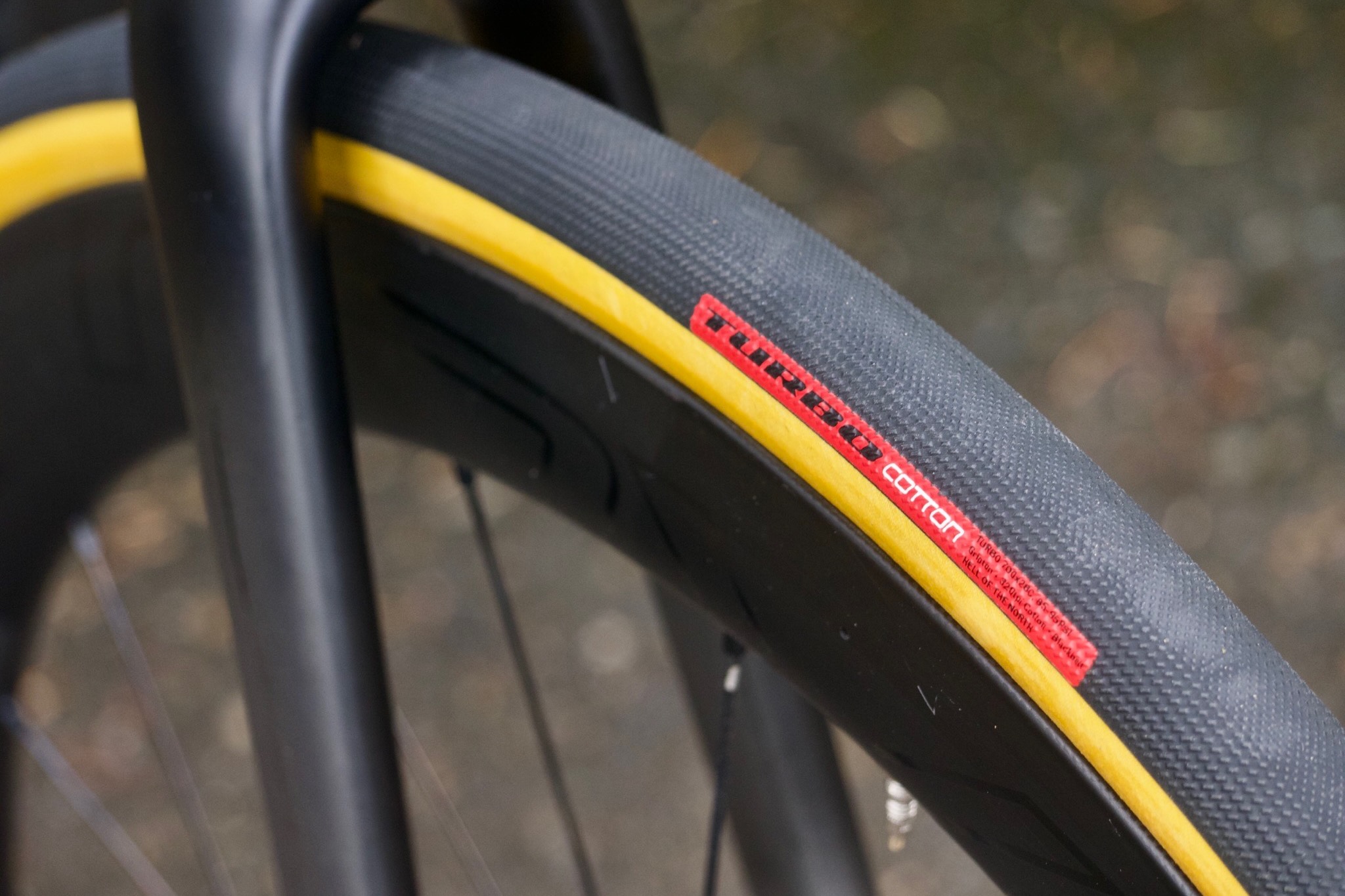
TPI (Threads Per Inch)
TPI (threads per inch) ratings are found on nearly all road tires, and essentially tell you how supple a tire will feel on the road. Casing fabrics vary, and those with a lower thread count use coarser threads, while those with a higher thread count use thinner, more finely woven fabrics that are generally more supple. So, in theory, the higher the thread count, the smoother the ride. While that sounds simple, it isn’t always that cut and dry, depending on the way the manufacturer calculates their thread counts.
Road tire casings often consist of multiple layers of casing fabric, and often it is the sum of those layers that is the claimed TPI. Other manufacturers may specify the thread count of a single layer of casing fabric, despite there being multiple layers. Not every 300 TPI tire will feel the same, but in general, all 300 TPI tires will feel faster, grippier, and more comfortable than any 100 TPI tire out there. Since tires are the most cost-effective upgrade on any road bike, it’s often worth it to choose a tire with the highest thread count that you can afford.
Puncture Resistance
Depending on the conditions of the roads you ride, puncture resistance may be more or less important in your purchase decision. In years past, there was always a trade-off between high performance and puncture protection. The faster and more supple the tire, the more likely it was to puncture, and in most cases, the shorter its lifespan. Thanks to additives like Graphene and advancements in tire casing constructions, these choices around performance and reliability have become less fraught, as manufacturers developed a Goldilocks combination of these seemingly opposite traits. Still, there exists a clear line between training and racing tires, and if puncturing represents a ride ruined, we encourage you to look at more durable options like the Vittoria Rubino Pro or a super puncture-resistant model like the Continental Gatorskin. If speed and grip are your priorities, but you hate punctures (who doesn’t?) the good news is that you can now have it all as many manufacturers have figured out ways to better balance these traits in modern tires.
Air Pressure
For many years, road tires were ridden at very high pressures under the assumption that a firmer tire rolled faster. Traditional tire pressure of 120psi is now debunked, as it has been proven to increase rolling resistance on all but the glassiest of road surfaces and accelerate rider fatigue through increased vibration. Part of the reason for this high pressure was the smaller tire volumes available at the time, which has increased significantly in recent years. Again, research has concluded that counter to most folks’ intuition, larger tires don’t decrease speed. Larger tire volume means more air volume, and this allows for lower air pressure. Benefits are lower rolling resistance, better grip, and less rider fatigue. Typical pressure used today is anywhere from 50 to 85psi, depending on specific tire volume from 26 and 30c, road conditions, and rider weight. You can determine your ideal pressure using online tire pressure calculators, like Silca’s Tire Pressure Calculator to get the most out of your upgraded rubber.
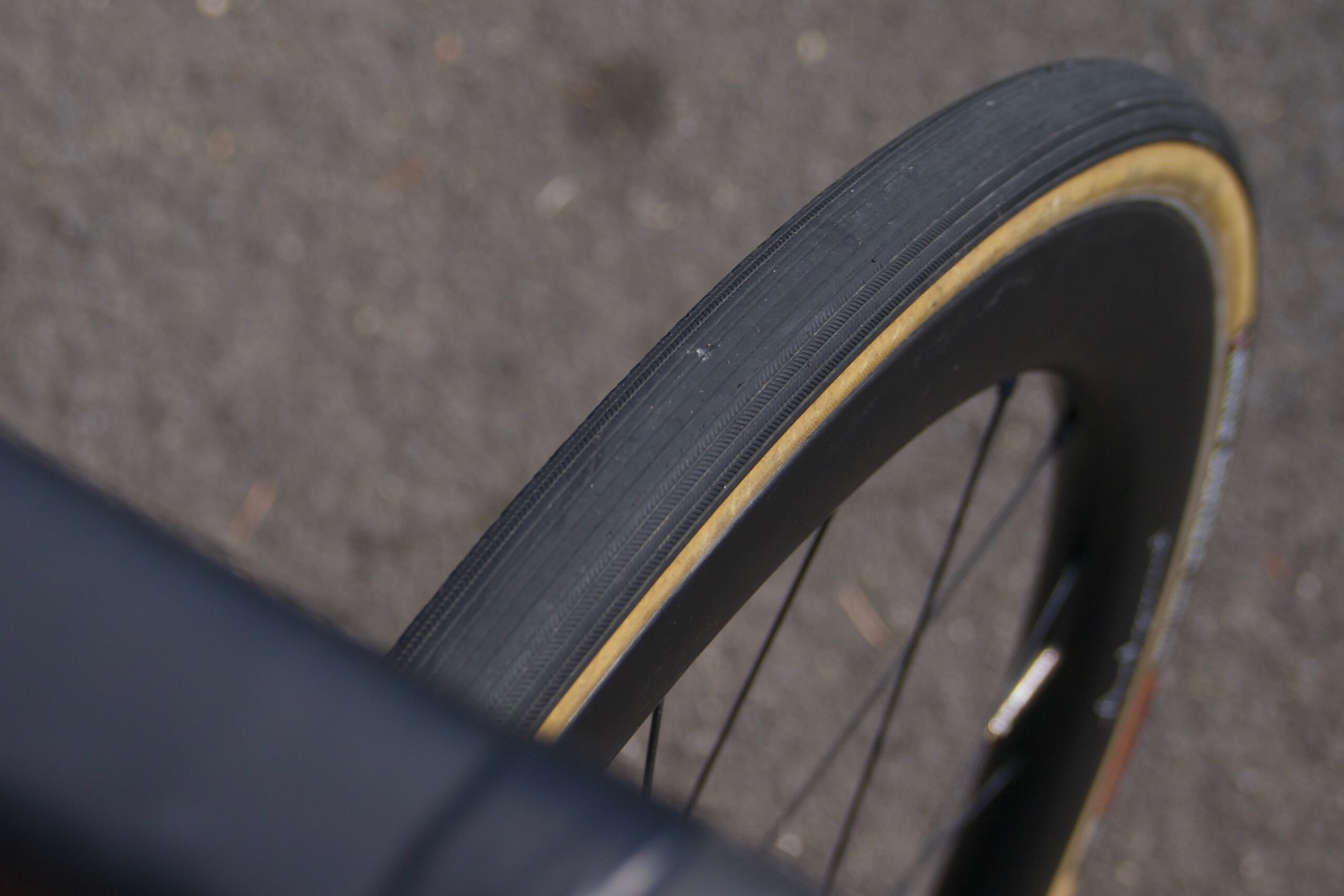
Tread Patterns
While the majority of road-specific tires are generally “slick” and have little to no tread pattern, many feature small, shallow tread patterns added to the shoulders of the tire. Tread patterns are unique to each tire, and while tire manufacturers all claim theirs to be the most effective in wet conditions, the reality is that it’s a great way for them to visually demarcate their products, and little more than that. No tire’s tread pattern is going to prevent you from losing control when you overshoot a wet corner and brake too hard because there simply isn’t enough contact patch on the ground to override the physics of the situation. In other words, a completely slick tire devoid of any tread pattern is likely just as effective as any elaborate pattern of grooves or nubs. Judging a tire based on how the tread looks is like judging a book by its cover.
Caring for Tires
It pays to routinely inspect your tires for debris. Oftentimes, punctures result from debris that has actually been lodged in the tire for a while, slowly working its way closer to the air inside as you continue to ride. The tip of a thumbtack and a smartphone flashlight will help you remove most foreign objects from the tread before this can happen. This makes a great item on a pre-ride checklist.
Tire rotation can be worthwhile as well. The rear tire is under significantly more pressure and will begin to square off at the edges more quickly than the front tire. Hopefully, before this happens, you can extend the life of the rear tire by moving it to the front, and vice-versa. Tires will also last longer if your bike is stored in a cool environment out of direct sunlight.
Price
Tires are consumable and wear at vastly different rates, depending on their design, rubber compounds, and the conditions to which they are subject. It’s important to match the type of tire to your expectations of how long a tire will last, given how often, and where you like to ride. Generally, lighter, more supple tires with thinner treads will roll quicker but also wear out sooner and cost more to replace. Tires with more heft generally cost less and last a bit longer if they don’t see too much abuse. Oftentimes, high-performance tires can be bought in 2-packs, which typically saves a bit on cost. Even if you don’t need two tires at the time, assuming that you like a particular model, having a backup in storage is a good idea.
In general, most clincher tires cost less than their tubeless counterparts. For example, the Panaracer Agilest Clincher retails for $57, while the Panaracer Agilest TLR goes for $80. So, you can save money by using tubes and clincher tires. Also, many of the harder-wearing tires designed for casual, recreational road cycling are on the lower end of the price spectrum. While they tend to be a little heavier and less supple than fancier tires, the tradeoff for durability may be worth it to those who ride rough pavement regularly or who aren’t as concerned with marginal performance gains.

Frequently Asked Questions About Road Bike Tires
This decision often comes down to what type of rims you have, but it is also a matter of personal preference. If you have clincher rims, you’ll need to get clincher tires to go along with them, or use a tube in a tubeless-ready tire. On the flip side of that coin, if you have hooked tubeless-ready rims, you can use tubeless-ready tires, or clincher tires with a tube. Those with hookless rims will need to use tires that are hookless tubeless compatible.
Many riders prefer to ride clincher tires because they are more affordable and generally easier to deal with, and they can’t justify the added price and weight of tubeless tires. Others find the benefits of tubeless to outweigh the price and weight penalties for their needs. So, beyond getting tires that will work with your rims, you’ll need to consider the pros and cons of each type.
Most tubeless-ready wheels/rims will say it somewhere on the rim itself. If it is not printed anywhere on the rim, a quick internet search of your wheel/rim model will generally provide the answer. If that fails, your local bike shop is another great resource and they will probably be able to tell you whether your rims are tubeless compatible or not.
Hookless rims are becoming more prevalent in road cycling and the primary difference is that the bead wall is flat and does not feature a “hook” that is present on a hooked tubeless rim or a clincher rim. Given that the tire bead does not have a “hook” to hold it in position, hookless rims are only compatible with tires that are specifically designed to pair with them. This involves tighter tolerances between the tire and rim and relies solely on the outward pressure of the tire against the rim wall to stay in place. One of the purported benefits of the hookless system is that it improves the shape of the tire, and thereby the aerodynamics, with a smoother transition from the rim as there is no hook to go around.
While there may be some benefits to hookless tubeless, it should be noted that hookless rims are only compatible with certain tires that are hookless compatible. The road tubeless market is heading in this direction, however, so it’s certainly not a bad time to jump on the hookless train if it appeals to you.
Like anything in cycling, road bike tires can be expensive. Often, this is a result of more advanced construction methods, rubber compounds, and the research and development involved in making high-performance tires. A good example is tubeless tires versus tube-type clincher tires. Tubeless tires are almost always more expensive than their clincher counterparts because of the additional materials and technologies needed to make them hold air, resist punctures, and provide support without the use of an inner tube. Generally speaking, higher-performance tires are typically more expensive with fancier rubber, higher thread counts, and claims of marginal performance gains. If these things don’t matter that much to you, there are lots of less expensive options that get the job done with a slight weight and ride quality penalty.
Related Content
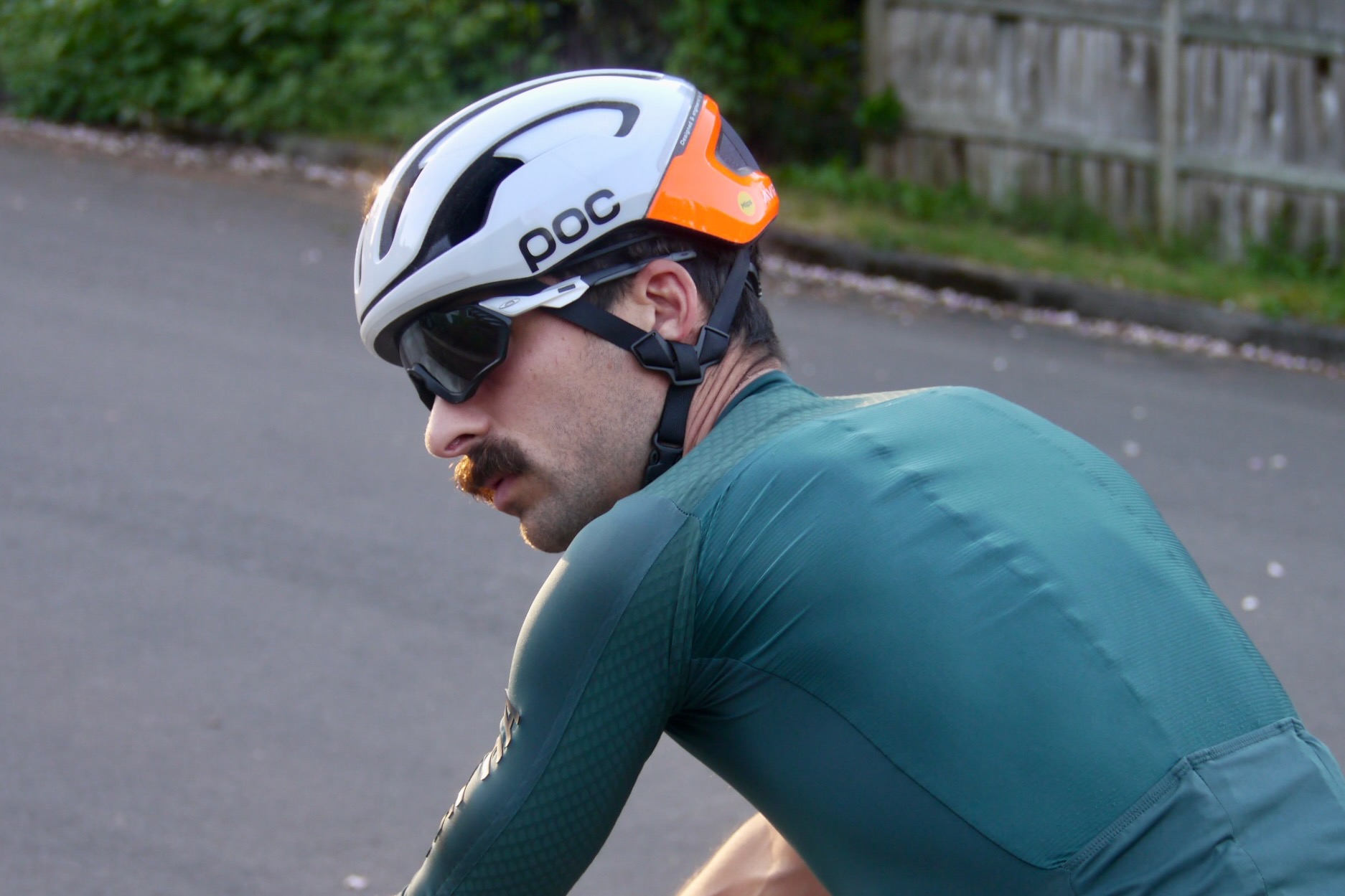
The Best Road Bike Helmets of 2024
While we all do our best to avoid them, accidents can and do happen, so a quality road bike helmet is the most important piece…

The Best Road Bike Shoes of 2024
When cycling, your shoes are an important accessory that enhance comfort, control, and efficiency, and finding the best road bike shoes can help elevate your…
